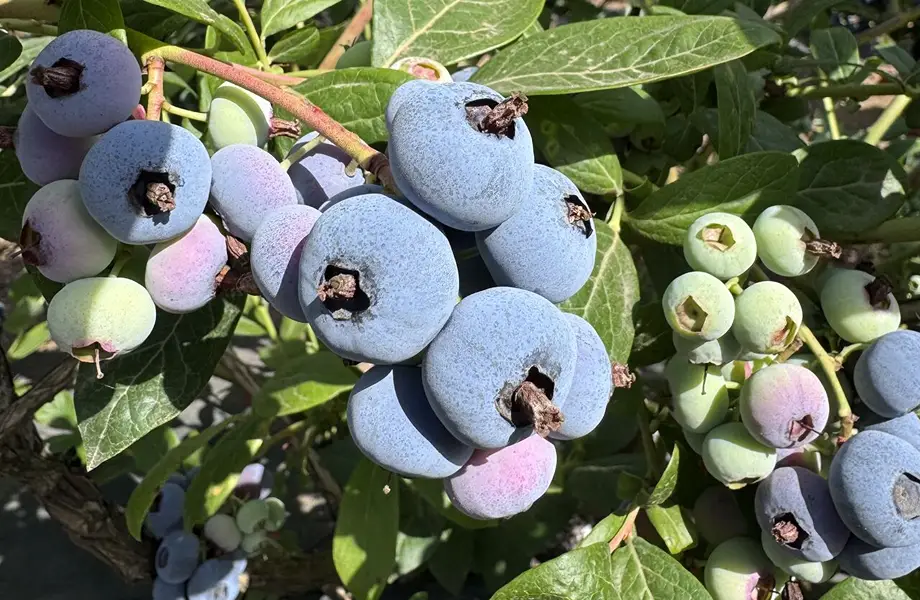from: Zoë Migicovsky, Tasting improvement in fruit flavor using genomics (New Phytologist)
We have all had the experience of choosing a beautiful fruit, taking the first bite and being sadly disappointed by the taste. While fruit selection for production traits such as yield, uniformity and disease resistance is an essential component of any selection program, flavour cannot be ignored.
Consumers have a direct link with the fruit they consume, and the future success of many fruit crops depends on their ability to meet consumer preferences. Indeed, while first purchases may be based on appearance, repeated purchases are often driven by internal attributes such as taste.
The taste is a complex and often elusive trait: it is the combined effect of volatile aromas detected by the olfactory system together with sugars and acids detected by the taste buds that are perceived together when a fruit is consumed.
Selection for fruit flavour can be facilitated by genomically assisted breeding, but it is necessary to identify the genetic markers associated with traits first.
In the article recently published in New Phytologist, Ferrão et al. (2020; doi: 10.1111/nph.16459) perform genome-wide association studies (GWAS) of volatile organic compounds (VOCs) and identify candidate loci involved in the flavour of blueberry, the first step in the development of a genomic toolkit for flavour enhancement of blueberry.
THE USE OF GENETIC MARKERS CAN HELP ENSURE THAT TASTE ATTRIBUTES ARE NOT NEGLECTED DURING THE BREEDING PROCESS.
Many fruit crops are perennial species with a long juvenile stage that requires several years for the plant to establish sufficient fruit for the breeder to evaluate. For example, in blueberry, fruit production may take three to four years after planting. Once the fruit appears, a breeder can select only a few seedlings, from the hundreds or thousands that have been planted, for further evaluation. The identification of genetic markers associated with fruit flavour may allow breeders to select based on these traits at the planting stage, improving both efficiency and cost, especially in perennial fruit crops with long juvenile stages (Edge-Garza et al., 2015).
BY COMBINING MARKER-ASSISTED SELECTION (MAS) WITH CONVENTIONAL BREEDING METHODS, BREEDERS IMPROVE THEIR SELECTION ABILITY TO OBTAIN TASTIER FRUITS.
In order to discover genetic markers for MAS or candidate loci for genetic modification of fruit flavor, it is first necessary to perform a genetic mapping using fruit flavor traits.
Traditionally, the taste of fruit was evaluated using appropriately formed sensory panels. Although these can be a valuable tool for flavour evaluation, such panels are resource-intensive and often only test a small number of applications due to their high cost and low productivity.
Recently, an apple study used a sensory panel formed to examine 78 apple cultivars over two years and linked the information with genetic data for GWAS, identifying new regions for fruit quality (Amyotte et al., 2017).

In GWAS, a large and diverse population is desirable because, among other reasons, it increases the statistical power and the recombination rate among the evaluated accessions. Having more recombination events captured within a group of individuals increases the resolution of the mapping and consequently the likelihood that the identified genetic markers are located near the causal site. However, the use of trained sensory panels to evaluate even hundreds of samples is often not feasible.
In order to increase the number of adhesions evaluated compared to sensory panels, some recent research efforts have been based on the use of more cost effective and high productivity techniques that provide quantitative measurements of taste attributes. For example, studies on apple (Kumar et al., 2015; Larsen et al., 2019) and tomato (Zhang et al., 2015; Zhao et al., 2019) have used gas chromatography-mass spectrometry (GC-MS) to measure birds and perform GWAS. By combining VOC data with GWAS data from different accessions, these studies increase the resolution of the mapping and are suitable for identifying genetic markers associated with fruit flavour. While the collection and analysis of such multidimensional traits is often costly, successful examples so far provide evidence of the potential for GWAS of fruit flavour in other crops.
The work of Ferrão et al. provides the first example of GWAS for VOCs in blueberry. The success of this work is partly due to the availability of a new reference genome, which has led to a substantial improvement in genetic research (Benevenuto et al., 2019).
Similar to the work on apple and tomato, Ferrão et al. used GC-MS to capture VOCs, evaluating the variations between 886 adhesions of 92 VOC families and linking this information with over 70,000 single nucleotide polymorphisms to perform GWAS.

Significant associations have been identified for 11 VOCs, covering one to five genomic regions, indicating that there are some impressive loci for these traits.
Within these genomic regions, the authors identify numerous candidate genes that may be responsible for VOC variation.
Results for the 11 VOCs with a significant association identified in GWAS were validated in a test population containing 552 additional individuals. These individuals were genotyped and phenotyped using the same methods. Three methods were tested for genomic assisted breeding: genomic selection (GS), GS with significant GWAS markers mounted as fixed effects, and MAS with only significant GWAS markers as fixed effects.
IN THIS STUDY, IT WAS SHOWN THAT MAS ALONE MAY BE SUFFICIENT FOR THE PREDICTION OF CERTAIN FLAVOR TRAITS.
By requiring fewer genetic markers than GS, the MAS approach also reduces the cost of genomics assisted breeding.
But how do we know that the volatiles in blueberry that can be predicted using MAS are important to consumers? The genomics work carried out by Ferrão et al. was complemented by a historical sensory analysis of 24 cultivars evaluated over six years, which determined the crucial role of VOCs in consumers' perception of fruit flavour and the potential value of genetic markers that facilitate breeding for VOC variation.
VOCs such as 1-hexanol, 2-undecanone, (E)-2-hexanal and eucalyptol were all found to be important for consumer preference. Previous work has also found that sensory perception of volatile compounds contributes to consumer preference for blueberry (Gilbert et al., 2015).
While Ferrão et al. proposed the first use of MAS for flavour in blueberry, the technique has been adopted in some other fruit crops, including grapes (Emanuelli et al., 2014), peach (Eduardo et al., 2014) and strawberry (Cruz-Rus et al., 2017). Flavour is a multifaceted trait and phenotyping VOCs in large breeding populations can be cost prohibitive. These DNA tests provide clear examples of the relatively simple genetic architecture of at least some flavour traits. DNA tests that predict important VOCs across different germplasm in fruit are incredibly valuable in facilitating the selection of new, tastier cultivars.
With the continuous development of genomic resources, including the presence and quality of reference genomes noted for horticultural crops, there is an increasing ability to identify genetic markers or even causal variants associated with fruit flavour. The identification of such candidates may also be transferable through minor crops, where such resources may lag behind.
WHILE GENOMICALLY ASSISTED BREEDING OF FRUIT FLAVOUR WILL CONTINUE TO BE COMBINED WITH TRADITIONAL EVALUATION BY THE BREEDER, THE USE OF GENETIC MARKERS CAN HELP ENSURE THAT FLAVOUR ATTRIBUTES ARE NOT NEGLECTED DURING THE BREEDING PROCESS.
Ultimately, a better understanding of the genomic architecture behind the taste of fruit will not only benefit breeding programmes, but will also lead to an improvement in fruit quality, allowing consumers to taste the results.













